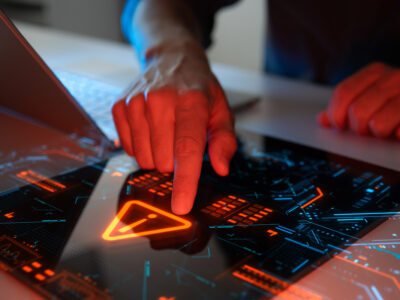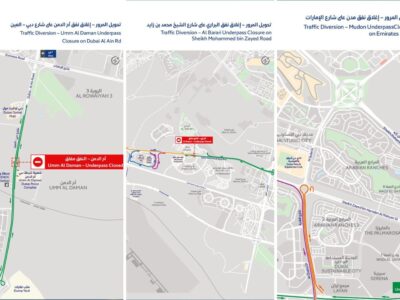Unified communications, unified collaboration, telepresence or video-conferencing – whatever you call it, this is a market that is opening its doors and players old and new are scrambling through and aiming for the top. Brid-Aine Conway looks at the latest systems a business can use to talk to the world without leaving work.
Polycom
Polycom is no stranger to the video-conferencing market, having specialised in unified collaboration since its inception in 1990.
Through its Middle East channel partner FVC, Polycom has begun supplying its RealPresence Experience High Definition (RPX HD) video-conferencing, along with a number of smaller HDX (high definition experience) systems.
Its first client was Georgetown University at Education City in Doha, which had high praise for the quality of the technology and the difference between “talking heads on a plasma screen” and “a common classroom reality” in last month’s ACN.
RPX works as an entire room, whether boardroom style or theatre style, that is then mirrored at other sites. In practice, this means that the table, chairs and carpets are the same, as well as room size, to create the illusion of a single meeting or conference, something that is common in a lot of modern conferencing systems (sometimes referred to as telepresence).
Where Polycom differs is in some nifty innovations to complete that illusion. The video camera is in the middle of the screen, rather than above or below it, so when you look directly at participants on the screen, the camera captures you looking at them eye-to-eye.
The microphones hang down from the ceiling, capturing all sound, rather than having individual microphones for each participant located on the desk in front of them.
This allows for natural speech and movement rather than self-consciously leaning towards the microphone and also captures the ordinary background noise of the meeting rather than single voices in isolation.
Participants have screens tucked into the desk they’re sitting at for sharing information like power-point presentations. The advantage is that instead of video of the other site being replaced by the presentation, participants at both sites are viewing the data together and can still interact with each other.
Having the technology tucked away, as well as the option to have the front table of the room actually touch the screen, conspires to make the illusion as real as possible for the participant.
As high-tech as RPX is, it also allows for low-tech participation. Some high end video-conferencing products can only be used within specific sites, but with RPX, cameras on the move, webcams and other IP cameras can be dialed into the meeting. So, for example, if a participant is late for a meeting and sitting on a train, they can still dial into the meeting on a mobile phone – hearing and speaking to the meeting if not also viewing it.
This last feature, coupled with the excellent design, makes Polycom’s video-conferencing really shine.
Its demonstration in Paris featured input from a mobile phone (video and audio), a webcam and even a portable camera. Where a lot of newer technologies fail is in their incompatibility with older technologies, forcing enterprises to opt for a complete overhaul of existing systems.
Very few companies would want to install specially fitted rooms in every one of their sites, but with Polycom, enterprises have the option to install in the main offices and still have access to smaller locations (down to and including travelling salespeople).
Price:US$300,000 – $500,000 per room
Length of installation:2 – 3 months
Size:approx 6m x 4.5m – 8.5m x 8.2m
Cisco
There isn’t much in enterprise IT that Cisco doesn’t have a hand in and video-conferencing is no exception. Cisco launched its TelePresence suites in the Middle East in October of last year, with a site expected to go live in November and ten to 15 further sites expected over the following three months.
TelePresence is a similar system to Polycom’s RPX, where the room is set up and mirrored at other sites with the same furnishings and technology. Cisco’s version also uses high definition video and comes in two forms – TelePresence 3000 which seats up to six participants at each site and TelePresence 1000 for smaller spaces which can also interact with the 3000.
This is a rather small range of possible video-conferencing equipment, although the company has said that it will develop solutions for different sectors in the future.
The rooms themselves are set up so that the desks face the plasma screens with a fixed camera above the screens for video broadcast. Since participants are looking at the screen rather than at the camera when speaking, this detracts somewhat from the authenticity of the same-room illusion.
In addition, information broadcasts like presentations are shown on a space below the screen quite close to the ground. This feels a little awkward and unnatural – looking at a presentation that is below the other participants rather than presented on a monitor on the desk or on the plasma screen itself.
These design features hamper the meeting in terms of how comfortable the participants feel.
In all video-conferencing systems, there will always be a sense of how artificial the set-up is. The aim of video-conferencing systems now, given the advent of high-definition video and the ability to stream content much closer to real-time than ever before possible, should be to remove that uncomfortable feeling so that the meeting can run as smoothly as it would in real life.
Participants in Cisco’s TelePresence have are reminded of the artificiality of the system because they are often looking in what feels like the “wrong” direction.
TelePresence is really aimed at the ultra-high end of the enterprise market, both because of its small range of products and its hefty price tag.
Considering this target audience, its design flaws become less excusable than they perhaps would be in a more inexpensive video-conferencing solution. On top of that, the systems are a little inflexible.
Unlike other systems, there is less range for connecting to low-tech endpoints. While Cisco announced in December, 2007, the ability to interoperate with standards-based video conferencing, the systems are as yet unable to connect with webcams or mobile phone cameras.
Also, this interoperability works through the Cisco TelePresence Multipoint Switch and Cisco Unified Video Conferencing systems, which an enterprise may still need to install in order to use other solutions.
With the number of IT companies available to enterprise customers and new technologies on the market all the time, inflexibility isn’t really something that companies have to put up with and there are too many players jumping into the unified communications space for a less than ideal design to last the pace.
Price:3000 – $299,000 per location, 1000 – $79,000 per location
Length of installation:3 – 4 days (after room assessment survey, planning and design)
Size:3000 – approx. 2.4m x 4.6m x 5.8m of space is required at minimum
Tandberg
Tandberg claims its first telepresence video-conference room was set up in 1985 and that it holds 40% – 50% of the world’s endpoint market share. Along with such impressive credentials, and an impressive client list that includes companies such as Google, the Norwegian enterprise brings an impressive range of video-conferencing systems – most of which run high definition video.
At the higher end of that range is its telepresence offering – Experia. Just as with Polycom and Cisco, this is where an entire room is put together to mirror another site in an attempt to create the perception of a same-room environment.
Experia comes in just one format, which seats six participants at each site facing a wall of three screens, with an additional screen placed below these for presentations and other data transmissions.
As with Cisco then, the participants are looking below the screens for the presentations, although Tandberg’s information screen is a 50-inch plasma where Cisco’s presentations are projections.
Also in common with Cisco, the cameras are located above the screens, making full eye-to-eye contact impossible. For Experia, there is a camera for each screen as well as a fourth camera in the middle which captures the entire room.
Multi-directional microphones are unobtrusively located on the table and individual speakers behind the screens for each participant mean that when a person speaks at the one location; their voice is heard coming from them at the other location. Experia also has the ability to interact with low-tech hardware and connections can be made over ISDN and 3G as well as IP.
However, where Tandberg really shines is in its range of solutions. An enterprise could outfit itself with only Tandberg products and consider itself prepared for any communication situation.
The next suite down from Experia is the two screen 8000 MXP model. This model again allows for IP, ISDN and 3G connectivity and participants can choose the bandwidth they wish to operate on from as little as 64kbit/s on ISDN all the way up to 4Mbit/s on IP. As well as that, the camera situated over the screens is movable with zoom capabilities.
From here, Tandberg’s range runs all the way down to a desktop system (1700 MXP) an executive office videophone with 768 kbit/s IP (1000 MXP) and a regular videophone that features 512kbit/s IP and can still display presentations (150 MXP).
The range also covers more niche options like set-top systems (rather than an all-in-one system) and portable options that include a field camera that can connect wirelessly to stream video or pictures.
Tandberg also has standards-based interoperability, but if an enterprise finds it gets along with any one of Tandberg’s systems, all its needs can be taken care of from this comprehensive range.
Experia is a somewhat limited option for a telepresence suite that also has some of the design flaws that hold Cisco’s system back – the presentations below screen and the lack of eye-to-eye contact, making it a less attractive option for those enterprises that want a high-end conference room. However, its modest price tag could prove to push it ahead of competitors.
Desktop systems:approx US$13,000 – $18,000
Group systems:approx $17,000 – $140,000
Length of installation:1-2 days
Size:N/A
Sony
Where Cisco and Polycom have designed video-conferencing systems for high-end enterprise customers, Sony is targeting the SMB market with its range of products.
Always a recognised brand, Sony is providing a wide range of different types of solution from personal executive to medium-sized conference room.
These are desktop and (more or less) install-it-yourself systems rather than the customised rooms of the higher end of the market – meaning they are a much more affordable investment.
The video and audio are high quality up the range, with a top-end system that features high definition which also accepts standard video signals. The system’s highlight feature is that an IP address is all that’s needed to dial in to any site.
Theoretically, this means that any camera with an IP connection can be viewed, which would also include unmanned cameras – a factor that should be of particular interest in industries such as oil and gas where unmanned rigs can be monitored by IP cameras.
P rice:Experia – US$199,000, 8000 MXP – $59,000
Length of installation:An incredible 4 hours for Experia.
Size:Experia: approx 4.6m x 6m
This is an entirely different sort of video-conferencing system in that it is a software-based solution that simply turns your client into a communication station.
Instant messaging, conferencing, email, voice and presence are embedded into commonly used business applications through Microsoft’s solution, foregoing the traditional IP PBX for a software-centric IP PBX.
This omission of the stand-alone PBX is something that Bill Gates sees as a strong possibility for the future, as he indicated at the launch of Microsoft’s Unified Communications products, “Over time, the lowest-cost structure will be not to have the PBX.’
If correct, Gates could be ushering in an entirely new phase in video-conferencing which could mean the end for high-end products such as telepresence suites.







